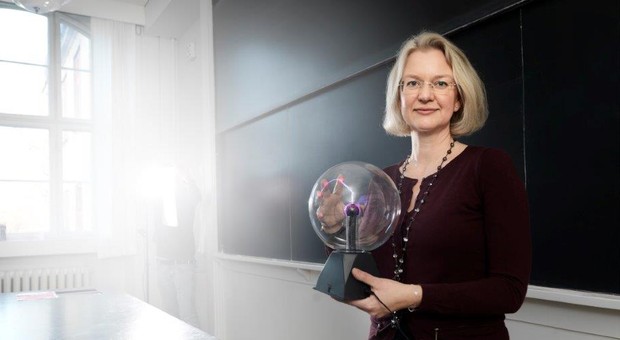‘- Major discoveries are waiting to be unearthed on the frontiers between scientific fields, says Lene Oddershede, physics professor at the Niels Bohr Institute of the University of Copenhagen.
In 2014, she received a 3-year grant of DKK 15 million from the Novo Nordisk Foundation’s new Interdisciplinary Synergy Programme. The Programme provides support for innovative, high-risk interdisciplinary research which aims to use biomedical and biotechnological approaches to resolve challenges in relation to health and disease, and for improving the use of natural resources.
Lene Oddershede’s project uses metallic nanoparticles such as gold to improve the treatment of people with cancer.
– A cancer tumour has an Achilles heel. As it grows rapidly, it creates a network of tiny capillaries that feed and supply oxygen to the tissue. When nanoparticles are injected into the bloodstream, some reach the tumour and are captured in and around the tumour because these particles cannot pass through the capillaries of the tumour, says Lene Oddershede.
– When irradiated with laser light, the nanoparticles absorb the light and become very hot, thereby burning the tumour away. We have carried out pilot experiments implanting human tumours into mice and demonstrated that laser-irradiated nanoparticles can remove tumours, she explains.
In addition, Lene Oddershede and her group are working on coating the surface of the nanoparticles with drugs, such as chemotherapy drugs, that can be released locally when heated.
– The temperature is only elevated near the nanoparticles, so the surrounding tissue is only harmed slightly. Infrared laser light by itself does not damage biological material, and this method therefore differs greatly from conventional radiotherapy, which destroys all tissue in the radiation beam pathway, says Lene Oddershede, who thinks that this method can be useful against all types of cancer and other forms of disease that require killing cells or releasing drugs in a specific location in the body.
INTEGRATING SCIENTIFIC DISCIPLINES
The partners in the project are: Andreas Kjær, Professor, Nuclear Medicine and PET, Rigshospitalet – Copenhagen University Hospital; Poul Martin Bendix, Associate Professor, Niels Bohr Institute, University of Copenhagen; and Naomi Halas, Professor, Electrical and Computer Engineering, Rice University, Houston, Texas, USA. Lene Oddershede believes that interdisciplinary collaboration is needed to make major advances.
– Physicists and physicians often work separately and focus on their own techniques. Synergy is lacking. Progress requires pooling resources, communicating and harnessing each other’s expertise across scientific disciplines.
During the next 3 years, Lene Oddershede’s group plans to continue working with mice so that the new therapy becomes ready to test on humans.
– We are not sure which nanoparticles are the most suitable to use and which type of laser beam is best. These are some of the questions we will be examining, says Lene Oddershede.
Lars Fugger, member of the Board of the Novo Nordisk Foundation and Chair of the Foundation’s Committee on the Interdisciplinary Synergy Programme, says:
– Exploring new paths to discover the best way forward is important. The Programme facilitates research collaboration between fields, which can lead to new understanding of, and answers to the important challenges in biomedicine and biotechnology. The ambition is that the synergy will lead to new solutions that the individual fields cannot achieve independently.








